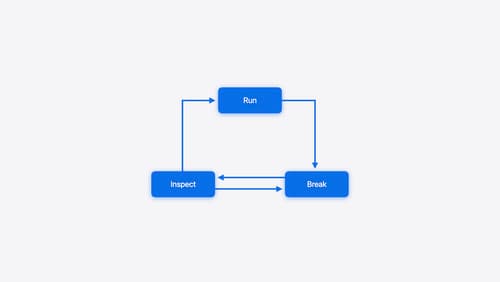who pooped?
Asked on 2024-07-30
1 search
It seems like your question is off-topic. However, I can provide information about the content presented by Apple at WWDC. For example, I can tell you about sessions related to debugging, memory analysis, or server-side Swift development.
Here are some sessions mentioned in the context:
-
Explore the Swift on Server ecosystem
- Introduction
- Agenda
- Meet Swift on Server
- Build a service
- Swift OpenAPI generator
- Database drivers
- Observability
- Explore the ecosystem
- Wrap up
-
- Introduction
- Heap memory overview
- Tools for inspecting heap memory issues
- Transient memory growth overview
- Managing autorelease pool growth in Swift
- Persistent memory growth overview
- How the Xcode memory graph debugger works
- Reachability and ensuring memory is deallocated appropriately
- Resolving leaks of Swift closure contexts
- Leaks FAQ
- Comparing performance of weak and unowned
- Reducing reference counting overhead
- Cost of measurement
- Wrap up
-
Run, Break, Inspect: Explore effective debugging in LLDB
- Introduction
- Agenda
- Debugging as a search problem
- Crashlogs & starting the program
- Breakpoints
- Breakpoint actions
- Help command
- High-firing breakpoints
- The p command
- @DebugDescription macro
- Wrap-up
If you have any specific questions about these sessions or need more details, feel free to ask!

Explore the Swift on Server ecosystem
Swift is a great language for writing your server applications, and powers critical services across Apple’s cloud products. We’ll explore tooling, delve into the Swift server package ecosystem, and demonstrate how to interact with databases and add observability to applications.

Analyze heap memory
Dive into the basis for your app’s dynamic memory: the heap! Explore how to use Instruments and Xcode to measure, analyze, and fix common heap issues. We’ll also cover some techniques and best practices for diagnosing transient growth, persistent growth, and leaks in your app.

Run, Break, Inspect: Explore effective debugging in LLDB
Learn how to use LLDB to explore and debug codebases. We’ll show you how to make the most of crashlogs and backtraces, and how to supercharge breakpoints with actions and complex stop conditions. We’ll also explore how the “p” command and the latest features in Swift 6 can enhance your debugging experience.
